A massive battery storage plant is in the works in Morro Bay. Here’s a look at the project site
The once-productive Morro Bay Power Plant looms above the bay, serving as a reminder of the city’s industrial history.
Weeds and wildflowers have reclaimed the site, growing in cracks in the cement where workers used to pace to and from their tasks.
It’s a scene that may not be around much longer, as the retired power plant could be replaced by a battery storage facility.
Texas-based energy company Vistra Corp. applied to the city to build a battery storage project on the retired Morro Bay Power Plant property. The facility would either house batteries in three Costco-warehouse-sized buildings or in 174 individual enclosures — enough to store 600 megawatts of electricity and power 450,000 homes, according to project development director David Yeager.
Meanwhile, Vistra agreed to tear down the existing Morro Bay Power Plant facilities and the iconic, 450-foot-tall emission stacks by 2027 or pay the city $3 million. Vistra also funded the city’s efforts to create a master plan that will guide future development of the rest of the property.
Built in the 1950s, the power plant was initially operated by PG&E until the energy company sold it to Duke Energy in 1998. Dynegy took ownership of the plant in 2007 before closing it permanently in 2014.
Vistra Corp. merged with Dynegy in 2018, acquiring the 107-acre power plant property.
Now, the company is working through the permit process and waiting for approval from the city of Morro Bay and the California Coastal Commission.
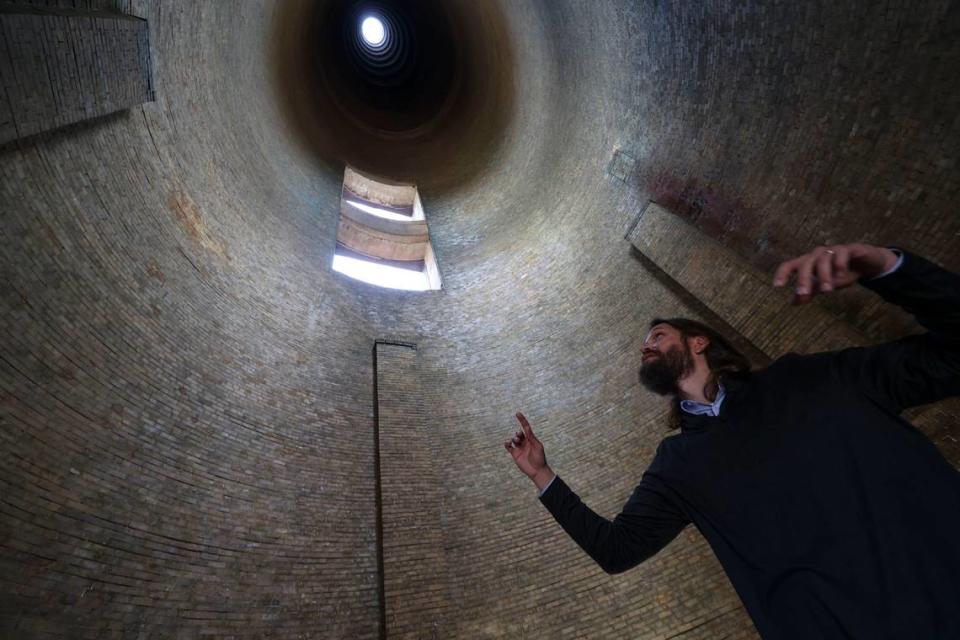
Yeager said the proposed battery plant supports California’s transition from fossil fuels to renewable energy.
“The site really symbolizes the transition of the grid as a whole,” Yeager said, pointing out that the battery facility would replace the formerly oil-and-gas-fueled plant
Meanwhile, the project faces strong opposition in the community.
More than 1,000 registered voters in Morro Bay signed a petition to support a ballot measure designed to block the battery plant. That measure will be on the ballot for voters in November.
At a community meeting about the battery plant April 24, audience members told Vistra representatives they were worried about the safety of the plant. One person even called the plant a “toxic bomb.”
The city released a draft environmental impact report for the project March 11, which will be reviewed by the Morro Bay Planning Commission on May 7.
The Morro Bay City Council and California Coastal Commission will eventually have the chance to approve or deny the project.
How would Morro Bay’s stacks be demolished and a new battery plant built? See the plan
Vistra proposed 2 project designs for battery plant
Vistra offered two primary designs for the battery plant.
The first is the original proposed project, which would house batteries in three, 91,000-square-foot buildings that are 35.2 feet tall, according to the draft environmental impact report.
Each building would house about 200 megawatts of batteries stacked in cabinets. The cabinets would be separated by fire-resistant walls and organized in rows inside each building.
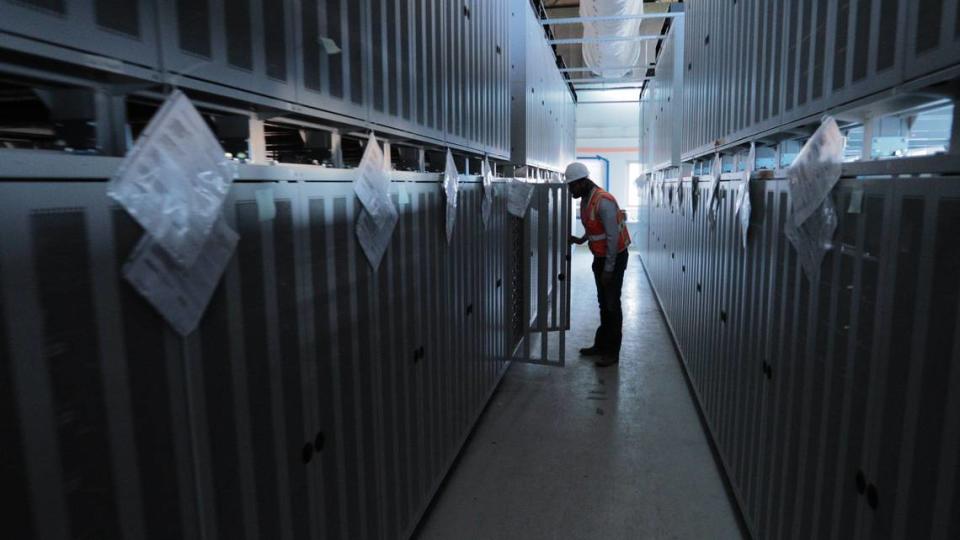
The alternative project design would contain the batteries in 174 separate enclosures that each hold 3.5 megawatts of storage, Yeager said. The enclosures would open to the outside, be spaced at least 10 feet apart and be separated by fire-resistant walls.
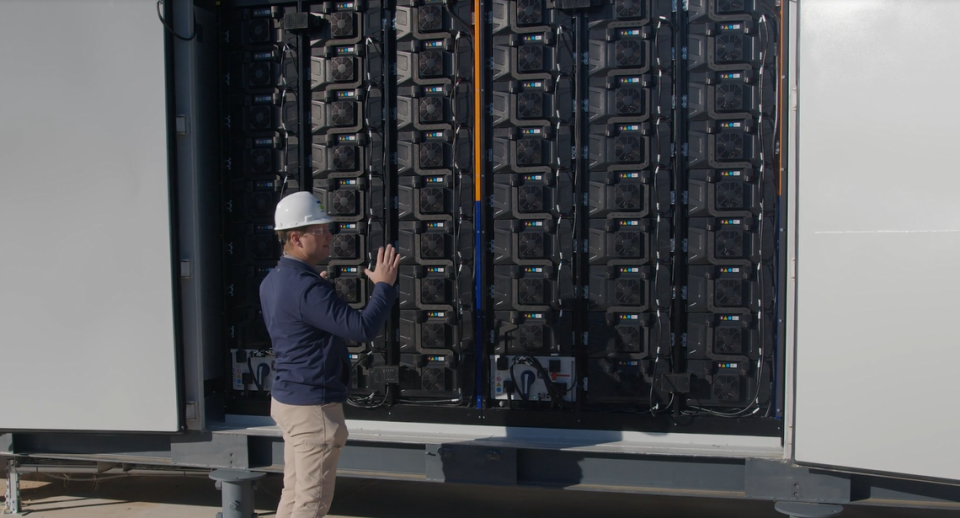
Both plant designs would hold 600 megawatts of electricity, enough to power 450,000 homes. Vistra has no plans to expand the project after its built, Yeager said.
The whole facility would receive and transmit power to the grid at once, according to Yeager. The facility can dispatch up to four hours of electricity at a time, he said.
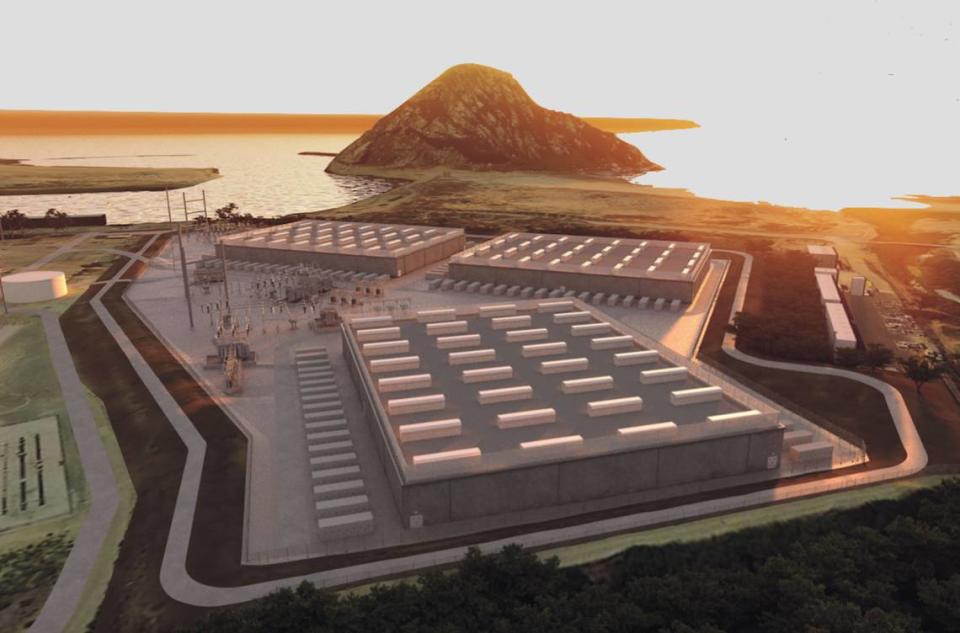
Yeager said the industry prefers housing batteries in enclosures rather than buildings as they reduce the number of batteries next to each other and improve fire safety.
“The buildings are safe, but the enclosures are better,” Yeager said.
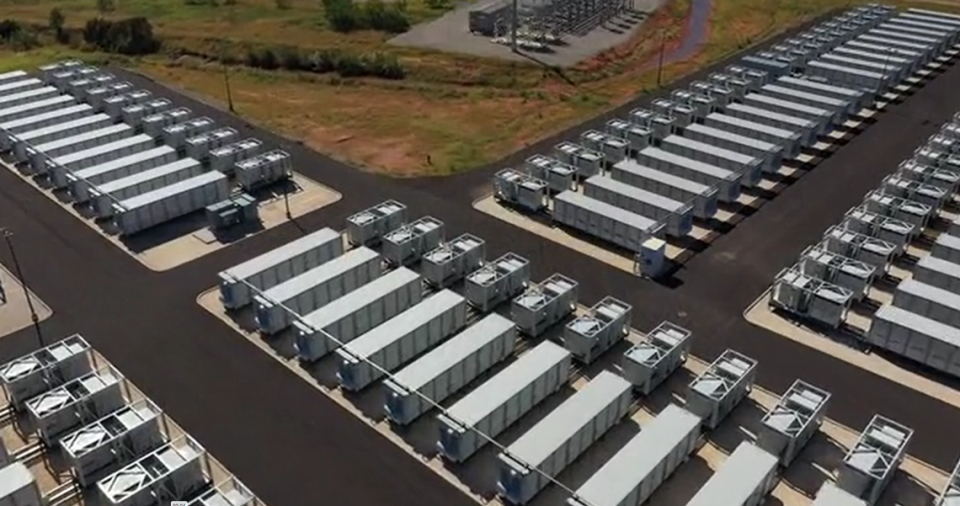
Under both options, the batteries are designed to automatically shut off and disconnect from the system if they experience problems, which prevents them from overheating and catching on fire, Yeager said.
Vistra could also manually shut down the battery plant during an emergency, such as if the city received a tsunami warning, Yeager said.
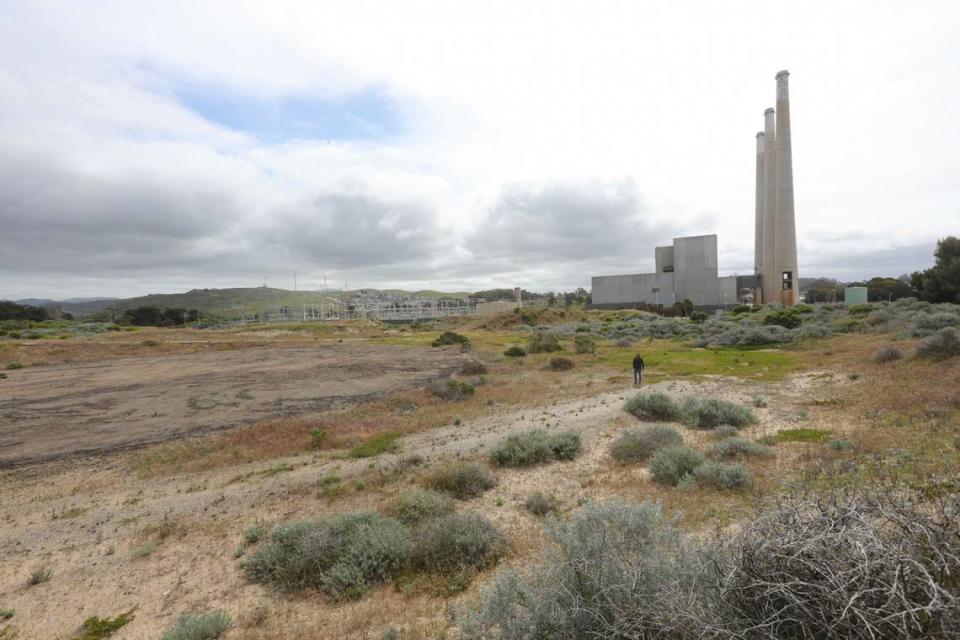
Meanwhile, the battery plant would be staffed around with clock by a total of six full-time plant operators so they can regularly inspect the equipment, according to Vistra spokesperson Jenny Lyon.
The plant will also be continuously monitored by Vistra’s Power Optimization Center in Dallas, Texas. There, engineers will review data and diagnostics from the plant to support the on-site operators, she said.
The battery plant would be built in a Federal Emergency Management Agency-designated 500-year flood zone, while the other half of the property is located in a 100-year flood zone.
The 24-acre parcel designated for the batteries is 4 feet taller than the rest of the property, offering a built-in defense to flooding, Yeager said. Vistra will also build the battery enclosures on platforms to protect them from potential flooding, he said.
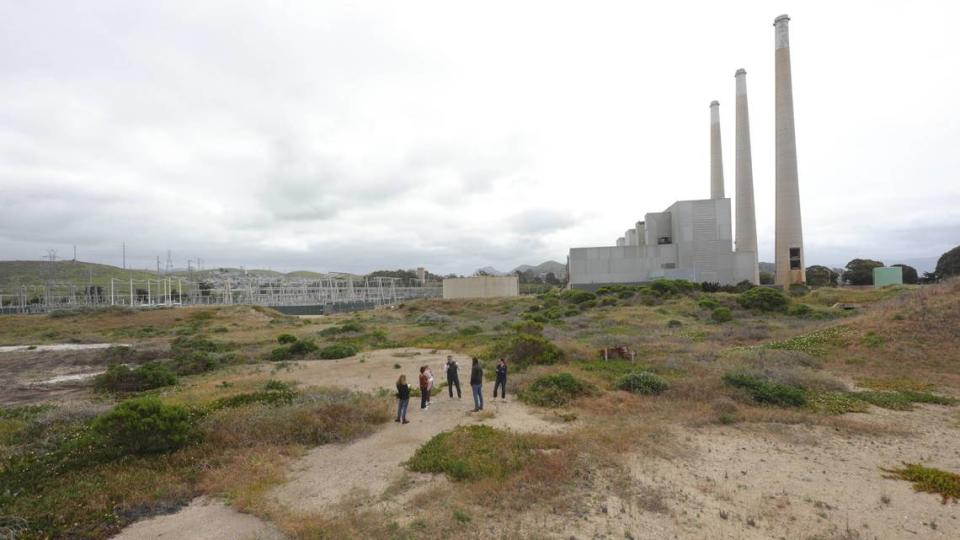
Battery facility could be built on contaminated land
Vistra applied to build the battery storage facility on a 24-acre parcel that used to be an oil tank storage area.
The former tank farm site is contaminated with total petroleum hydrocarbons (TPHs), fuel oils burned to generate electricity, as well as polycyclic aromatic hydrocarbons, which are found in TPHs, according to a 2022 report from the California Department of Toxic Substances Control.
Unless the pollution is cleaned up, the site can only be safely used for industrial or commercial purposes like the proposed battery plant, the state agency said.
Scientists couldn’t test soil under the power plant building at the center of the property, so they do not know if that portion of land is contaminated. However, the agency did not detect harmful levels of pollution on other parts of the property.
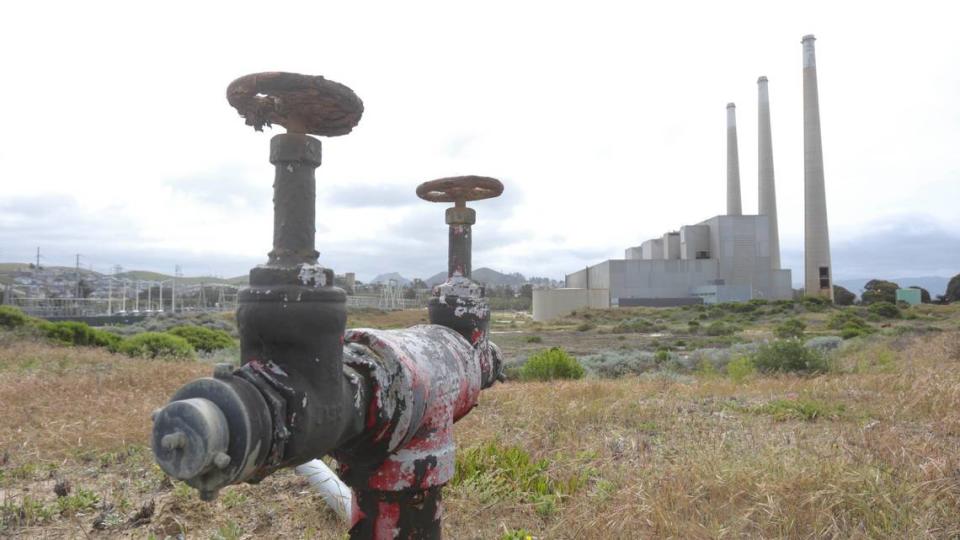
Right now, sand berms divide the parcel into five sections, each stamped with a circle the size of the oil tank that used to sit there. Scraggly bushes and purple wildflowers now grow in place of the oil tanks.
If the city approves the project, Vistra will remove those berms and flatten the soil to serve as a foundation for the batteries.
The west, north and northeast sides of the 24-acre site for the battery plant are surrounded by 33-foot tall berms. Originally designed to contain oil spills, the berms would protect the battery facility from flooding, tsunamis and block views of the batteries from the street.
Only about 2 feet of the buildings would be visible from the street if the city selects the three-building design. If the city selects the alternative design, the 15-foot-tall buildings would be fully concealed by the berms.
“People from the Morro Rock parking lot would see exactly what they see today, but with an improved berm and vegetation,” Yeager said.

Yeager said the industrial history of the site makes it an optimal location for the plant.
The city’s draft environmental impact report said the project would have no significant impacts on the environment. Yeager attributed this to the fact that the land was already damaged by the Morro Bay Power Plant.
Building the battery plant elsewhere would have a much larger impact: the project itself and the building of new transmission lines to connect the plant to the grid, according to Yeager.
“We avoid both of those things” at the proposed project site, he said.
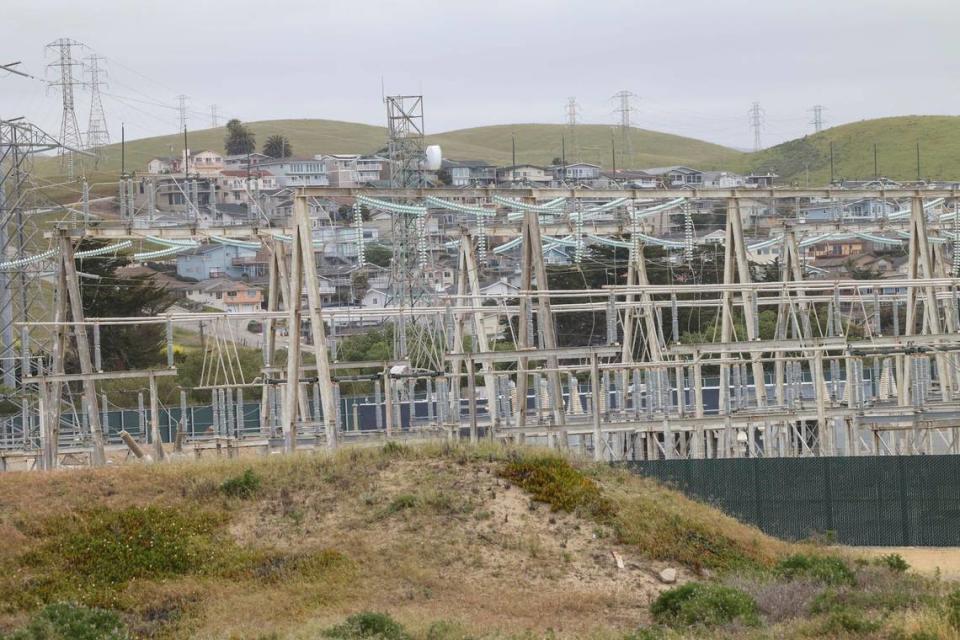
Why build a battery plant in Morro Bay?
Today, a PG&E-owned-and-operated switchyard buzzes on the eastern edge of the property.
The yard was originally built to carry electricity from the Morro Bay Power Plant to the grid, but now it only transports electricity from the grid to customers in the area.
Vistra chose this site for a battery plant because it is already connected to California’s electric grid.
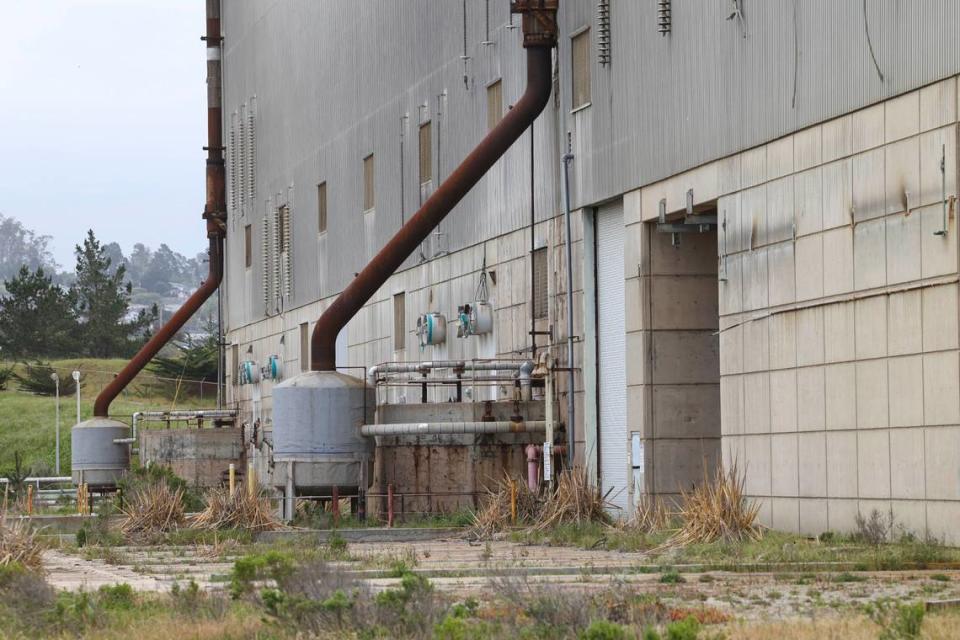
The battery plant would plug into the switchyard to capture and store excess electricity generated during periods of low energy demand, then send that electricity back to the grid when the demand for power exceeds the amount that is generated, Yeager said.
The batteries would store electricity on the grid from nearby renewable energy producers, such as the solar farms in the California Valley.
The battery plant is not affiliated with the offshore wind farms in development off of SLO County’s coast, Yeager said, but the plant could store electricity generated by the offshore wind farms when they are built.

